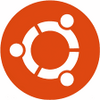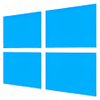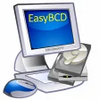Use this tool to access other programs that have a high level of graphics inside
Use this tool to access other programs that have a high level of graphics inside
Popular programs in Operating Systems
What is Ubuntu
Ubuntu is a Linux distribution designed as a general OS focused on ease of use built using only free, open source software. Although focus is shifting to add tablet and phone compatibility, it remains one of the most popular desktop distributions.
Ubuntu is available for i686, x86_64, and PowerPC processors, allowing users to install this OS on almost any PC or Mac from the past decade. ARMv7 and later processors are also supported, but not the older ARMv6 found in the Raspberry Pi. Depending on the platform, users can install Ubuntu from a CD, DVD, USB drive or from within Windows. It can also be used as a "live" OS booting directly from the installation media, allowing users to try it out before installing.
As with other desktop-centric distros, Ubuntu provides most of the software home users will need as part of a fresh installation. This includes Firefox browser, GIMP image editor and LibreOffice office suite. The Ubuntu Software Center makes it easy to install free and pay apps including software from Steam. Closed source software like Adobe Flash and proprietary video drivers are left out of the base installation, but these are available through the Software Center.
Recently, development has shifted to turning Ubuntu into an all-in-one operating system that is compatible with phones, tablets and computers. Central to this is the touchscreen-focused Unity user interface. Desktop users may find this interface annoying, particularly the Smart Scopes feature which searches both locally and from the web, giving results that are too generic and unhelpful. The animation-heavy UI can also be painfully slow on older computers.
Fortunately, there are ways to fix these problems. For instance, there are multiple forks of Ubuntu promoted and supported as separate distributions, but these can also be installed on top of a base distribution through the Software Center. Some forks are compatible with other desktop managers like KDE (Kubuntu) and XFCE (Xubuntu,) while others are task-specific, such as Edubuntu for education. Once installed, each user can choose the fork they want to use from the log in screen.
The developers name each version after the year and month they release them in. That is, regular versions come out every April and October, while Long Term Service (LTS) versions come out every two years. Ubuntu offers support for 9 months on regular versions and 5 years for LTS versions. Users can upgrade the entire system to the latest version using the Upgrade Manager utility.
Pros:
- The Ubuntu install disk/image is "live," letting users try it out before installation.
- Easy to install, offering DVD and USB options as well as installation from within Windows
- Support for a variety of processors means it will run on almost any computer.
- A wide range of both free and pay software is available through the Software Center.
- Users can install forks of the main distribution and, thus, users can get the desktop manager and software they want.
Cons:
- Common proprietary software like Adobe Flash and video drivers are necessary after installation.
- Some users may find Unity's interface grating, especially the search feature. It also runs slowly on old computers.
- Although it's easy to upgrade to the latest version, regular releases are only supported for 9 months.






